Orthodontic problems can affect anyone – in fact, our teeth are almost never naturally perfect. Malocclusion, or a “bad bite”, can cause problems with chewing, oral hygiene, speaking and aesthetics. A bad bite can be genetic, or can be caused by thumb sucking, dental disease, poor dental hygiene, accidents, birth defects or other medical conditions.
Being educated about the orthodontic problem you or your child may have is the first step to correcting it. Orthodontic treatment performed by Dr. Albert M. Stush can improve both the functionality of your bite and the appearance of your smile.
Below are some examples of the most common orthodontic problems.
Upper Front Teeth Protrusion
The appearance and function of your teeth are impacted by this type of bite. It is characterized by the upper teeth extending too far forward or the lower teeth not extending far enough forward.
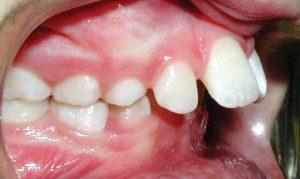
Overbite or Deep Bite
The upper front teeth excessively overlap the lower front teeth. It is not unusual for the lower front teeth to bite into the roof of the mouth with this condition. Excessive wear of the biting edges of the front teeth can be a problem resulting from having a deep overbite.

Crossbite
The upper teeth sit inside the lower teeth, which may cause the jaws to misalign as they grow. It can also cause crowding and poor angulation of the front and back teeth. The lower jaw is usually shifted to the right or left due to crossbites.
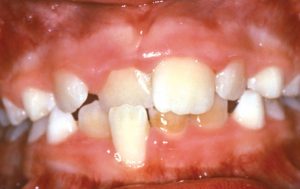
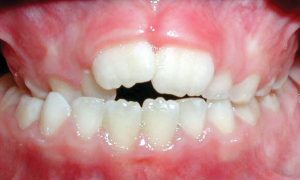
Openbite
Proper chewing is nearly impossible with this type of bite because the upper and lower front teeth do not touch. The bite is open. Open bites may be due to a long term finger or thumb sucking habit. Open bite problems indicate a definite need for orthodontic treatment and are sometimes difficult to correct, dependent on the reason it is present.
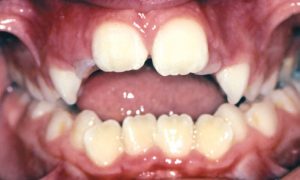
Crowding/Malalignment
Crowding occurs when teeth have insufficient room to align correctly by themselves after eruption. Sometimes crowding is so severe that teeth cannot erupt through the gum tissue. Crowding is the most common orthodontic problem seen, especially crowding of the lower front teeth.
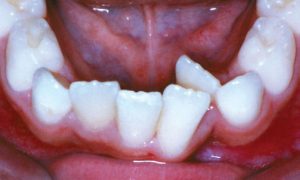
Spacing
Spacing problems may be caused by a mismatch in tooth size and jaw size, by smaller than average shaped teeth, by missing teeth or by lip, finger or oral muscle habits. There are many effective orthodontic and esthetic treatment approaches for spacing problems, no matter what your age.
Some spacing in young children is a positive sign that there will probably be enough room for the permanent teeth to erupt.
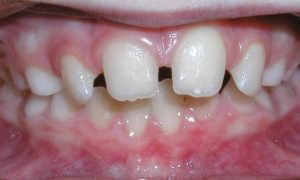
Dental Midlines not Matched
If the middle of the upper front teeth and lower front teeth do not match, it could be a result of crowding, unequal jaw growth or missing teeth. It is usually a result of other underlying orthodontic problems.
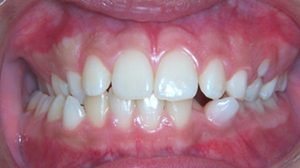
Underbite
In an underbite, the lower jaw extends out, causing the lower front teeth to sit in the front of the upper front teeth.
